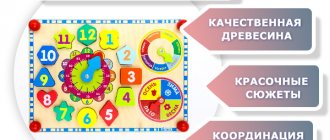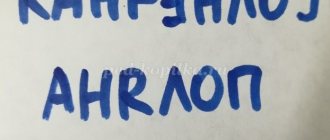Didactic game “Dress the dolls in national costume” for children of senior preschool age
Irina Pogorelova
Didactic game “Dress the dolls in national costume” for children of senior preschool age
Without knowing your roots, the traditions of your people, you cannot raise a full-fledged person. Thus, familiarity with the costumes of Russian , Kalmyk and other peoples helps to cultivate a love for history, the culture of the people, and helps preserve the past. To impart knowledge unobtrusively, it is necessary to select didactic games that would help quickly assimilate the material in a fun way.
Dear colleagues, I would like to present to your attention one of these games - the didactic game “ Dress the dolls in national costume ”
.
The game was made in collaboration with Davaeva Svetlana Sergeevna - the artistic design of the game.
Purpose of the game. Consolidating knowledge about the features of Russian and Kalmyk folk costume .
Didactic tasks.
• Strengthen the ability to correlate the type of clothing with the gender of the child.
• Train the ability to consistently put together an ensemble of women's and men's clothing from parts.
• Practice identifying items of clothing. Learn to find distinctive features in costume , decor, patterns and ornaments.
the names of elements of national clothing in children's speech .
•Develop mental processes: voluntary attention, memory, logical thinking. Develop fine motor skills.
• To cultivate in children an interest , a moral attitude towards the history and culture of their native land, aesthetic taste, a sense of harmony and beauty.
Game material. Large flat dolls (2 boys and 2 girls)
, clothes and hats made of thick paper.
The costumes are cut into pieces .
Pictures are samples. All elements of the game are varnished and are resistant to abrasion and dirt.
Game task. It is correct to dress the doll in national costume .
Rules of the game.
Children are offered large cut-out pictures depicting items of national clothing . children's task is to reconstruct the image by composing it from parts. Items of clothing are mixed. Select and dress a boy or girl national
1st option. Children carefully look at costume . Then they select parts of clothing items and place them on the silhouette ( “dressing”
the dolls ).
During the game, children must name what clothes they have chosen. 2nd option with complication. Children without a sample, from memory, select parts of clothing items for a certain silhouette and “dress”
his.
The first player to dress the doll .
The didactic game can be used in classes to familiarize yourself with the traditional everyday culture of the Russian and Kalmyk people, and in classes in visual arts (modeling, drawing, applique, as well as in independent play activities in small groups of 4 - 6 people or individually.
Thank you for your attention!
Making a folk costume for a play doll with your own hands. Master Class
Master Class. Creating a simplified version of the (Russian) folk costume for a play doll with your own hands 35-55cm. Lots of letters and photos. Good day to all readers! I often sew for dolls, especially kindergarten ones. One of the latest “orders” puzzled me a little at first. — We need a doll in a red folk costume with a kokoshnik for the corner. Well, sew it from some scraps.
Of course, I couldn’t resist and said something about a bear with a balalaika))) A bear, they said, is not necessary, but a red dress with a kokoshnik is necessary.
It is clear that real costumes for a 45-50cm folk doll are not sewn from “pieces”, and the kokoshnik alone can be embroidered for months... Therefore, the task had to be simplified and made as cheap as possible. Budget - 0 rubles 00 kopecks.
I was given the future “Russian beauty”. A sturdy Soviet doll, about 50-55cm tall, with a wild hairstyle and no underwear. Linen is not held in high esteem in our garden at all; even when put on a doll, it disappears in the most mysterious way exactly after a week. I checked)))
To begin with, the doll was washed, hair straightened and curled. The most ordinary human ones from a well-known network company)) I love them (these curlers) selflessly, honestly.
I photographed the doll next to my Italian (45cm) just out of curiosity and as a keepsake.
Our folk costume will consist of a lower dress (a white shirt with embroidery and frills) and a red upper dress (as ordered)). We make the kokoshnik last.
We start with the undershirt. This will be a white dress cut at the waist.
I most often draw patterns on paper first. The most important detail is the top of the shirt (from neck to waist). First, draw separately 1/2 of the front part and 1/2 of the back part. Then we fold the parts of the shelf and back to each other with shoulder seams and combine them into one common part. The result was half the top of the finished product.
Mdams... I'm sorry, but I made the pattern “disposable” on unnecessary paper)))
Then we put this detail on the fabric and trace it, creating one single element on the fabric.
The part on the right was already outlined, then the paper pattern was turned over and the left part was outlined in a mirror image. My pencil is disappearing, so we don’t pay attention to the extra lines (on the left in the photo)).
The part was cut out. The clasp will be at the back. Let's try it on a doll. The piece is one piece, we will sew only the side seams. Not now!!!
We adjust the fit on the figure before stitching. We're not sewing anything yet! Now let's do the sleeves. In a lightweight version, these are just rectangles. We calculate the dimensions “according to the doll”. We need sleeve length and width taking into account gathers. You can mark it on a ruler and cut it out.
To preliminary evaluate the result, we put machine stitches along the top of each sleeve part to create gathers. We tighten the stitches and apply the sleeve blanks to the dress blank.
If everything suits you, you can lay finishing stitches along the sleeve parts at an arbitrary height and in an arbitrary quantity. The bottom of the sleeve is immediately decorated - lace, elastic... whatever your imagination dictates. The sleeves are stitched to the armholes, and the cut is processed. Then we combine and stitch the side seam of the shirt and sleeve with one seam. We process the cut. You can design the neckline. The easiest way is a stand-up collar made of lace. We make the skirt in the same way as the sleeves - we measure, cut out a rectangle, decorate the bottom (ruffles, lace, ruffles), and process the side sections. We apply it to the doll.
Adjust the length. This needs to be done right now, because... We have already processed the bottom of the skirt. We connect the lower and upper parts of our white (bottom) dress.
Now we process the fastener. She's behind. The options are different. You can make the top part with buttons, and half of the skirt (starting from the bottom edge, stitch it into a single piece).
The red part of the outfit. We choose the color scheme of the decorations. In a simplified version, all skirt decorations can be reduced to jacquard braid and a couple of decorative stitches. We apply available (and more or less matching in color scheme) ribbons and ribbons.
We make the final choice. Decorative stitches (if you don’t sew often and are not sure of the result) are best practiced on pieces of fabric. In our case, the fabric is a bit thin, so we sew on paper. The training results look something like this:
To simplify the task as much as possible, I decided to abandon the traditional design of an outer dress in the form of a sundress, replacing it with a skirt. It's easier and faster to sew a skirt. On a doll of this size it will look quite “popular”. We try on an almost finished skirt with processed bottom and side sections.
Adjust the length. Again “cleanly”, because... The bottom edge has already been processed. We make the necessary folds/gatherings for a good fit. Sew a belt to the top of the skirt. I took ready-made bias tape in a matching color. I made the skirt “with a wrap”, i.e. it wraps around the waist (under the bust) and is tied with a bow. To form “strings,” the belt is made slightly longer than the fabric. For some reason I didn’t take a photo of the finished skirt. It will be lower on the doll.
Let's move on to the kokoshnik.
The shape is drawn randomly by hand on paper, cut out, tried on the doll's head, put aside, a new one is drawn... and so on until the manufacturer likes the result))) I made about 5 options, settled on the least cumbersome and easiest to implement. (I am aware that the headdress of girls (and judging by the body, our model is a girl of about 7 years old) looked different in Rus'))) but they made it clear to me that the administration of the kindergarten does not care about this historical fact even once. That's why we have a kokoshnik)))
Using the pattern approved by us, we cut out blanks from the main fabric (from which the dress was sewn). Quantity of 2 pieces.
You can force this structure to keep its shape in different ways. The simplest thing is thick fabric with an adhesive base (dublerin). The interlining is too thin, we don't take it. I duplicated only the part of the kokoshnik that will be on the outside, the back part without reinforcement. Then we draw a pattern on the “front” part of our headdress. I didn’t complicate matters by pushing the element under the embroidery machine. Therefore, I simply drew the trinket by hand with disappearing chalk and embroidered it with metallic threads on a regular sewing machine using one of the thick decorative stitches.
We are not afraid of the abundance of chalk on the front side of the product. The chalk will disappear in 24 hours, it is special))) The most difficult thing is to connect the two parts of our kokoshnik. Ideally, the lower part should be slightly smaller than the upper. One of the options for achieving this result is to decate the lower part after stitching. Stitch with right sides facing inward. We trim the edges to a reasonable height and cut off the excess in the seams. We turn it inside out and iron it with an iron and steam (yes, this is decating at home, you can also sprinkle it with some water)) The unduplicated lower part of the kokoshnik shrinks and we get the very bend we need. Naturally, this will only work with new, all-natural, thin cotton fabric. Synthetics almost never shrink. We process the bottom cut with the same bias tape that was used to complete the red skirt. The kokoshnik is almost ready. You can embroider it with beads. But the fastest way is to stick rhinestones)))
We dress up the doll.
“Red folk costume with kokoshnik” is ready. We pat ourselves on the head))) We completed the main task - we sewed a simple, inexpensive outfit as part of the announced order. Looking ahead, I will say that the administration was very pleased, promised a monument and asked to sew the same one “from leftovers” for another group. Having heard that everything was done exclusively with personal funds, I lowered my eyes in disappointment...
Our kindergarten is municipal, unpretentious, without fees “for European-quality repairs and European-quality furniture,” we and our children sincerely love it and therefore, pretend that the following photo did not shock you)))
I hope that this treatise will inspire you for larger-scale projects and give you some ideas for implementation in completely different products.
Many thanks to everyone who made it to the end or at least looked at the pictures)))
You can find clothing patterns for dolls in our section on Babies


